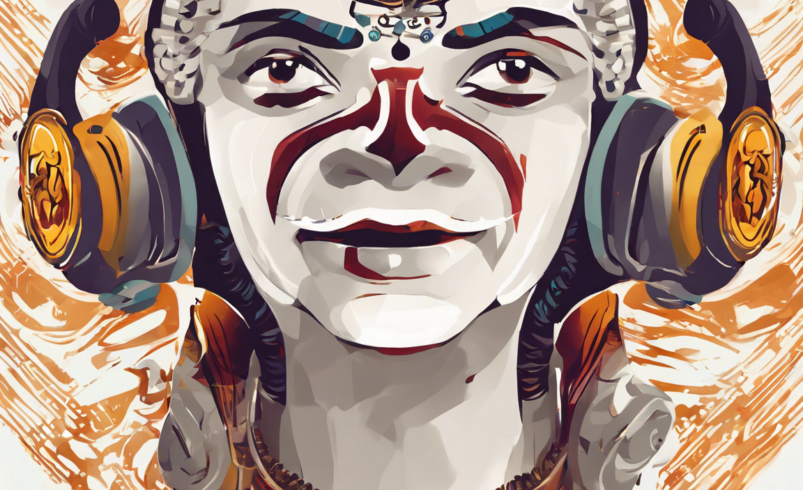Introduction
Sathyanathan is a renowned figure in the realm of Indian classical music, particularly in the Carnatic tradition. With a career spanning over four decades, he has left an indelible mark on the hearts of music enthusiasts worldwide. His prowess in vocal rendition, coupled with a deep understanding of ragas and talas, has enchanted audiences and critics alike. Let us delve deeper into the musical journey of this maestro, exploring his early influences, notable achievements, and unique contributions to the world of music.
Early Influences and Training
Sathyanathan’s journey into the world of music began at a young age, under the tutelage of his father, who was himself a skilled musician. Growing up in a household filled with melodies and rhythms, he imbibed the essence of Carnatic music from a tender age. His initial training in vocal music laid a strong foundation for his future endeavors and shaped his musical sensibilities.
As he progressed in his musical journey, Sathyanathan had the privilege of learning from stalwarts of Carnatic music, such as Semmangudi Srinivasa Iyer and Lalgudi Jayaraman. Their guidance and mentorship honed his skills and deepened his understanding of the intricacies of ragas, compositions, and improvisational techniques.
Notable Achievements
Sathyanathan’s musical prowess and dedication to the art form have earned him numerous accolades and distinctions over the years. He has performed at prestigious music festivals and venues across the globe, mesmerizing audiences with his soulful renditions and virtuosic technique.
One of his most notable achievements includes receiving the prestigious Sangeet Natak Akademi Award, a coveted honor bestowed upon individuals who have made significant contributions to the field of music. This recognition reaffirmed his status as a maestro in the world of Indian classical music and solidified his legacy for future generations to admire.
Unique Contributions to Music
Sathyanathan’s musical oeuvre is characterized by its blend of tradition and innovation. While he remains deeply rooted in the classical Carnatic music tradition, he also incorporates elements of fusion and experimentation in his compositions and performances. His ability to seamlessly fuse diverse musical influences and genres speaks to his versatility and creative vision.
Moreover, Sathyanathan is known for his profound lyrical interpretations and emotive expression in his vocal renditions. His ability to infuse each note with feeling and depth resonates with listeners on a visceral level, transcending linguistic and cultural barriers. This unique gift has earned him a dedicated following of music enthusiasts who are drawn to the sincerity and passion of his artistry.
In addition to his solo performances, Sathyanathan has collaborated with a diverse array of musicians and artists from around the world, creating fusion projects that push the boundaries of traditional music genres. By embracing collaboration and cross-cultural exchange, he continues to inspire and innovate, enriching the musical landscape with his distinctive voice and vision.
Conclusion
Sathyanathan’s musical journey is a testament to the transformative power of music and the enduring legacy of artistic expression. Through his dedication, talent, and innovation, he has elevated the status of Indian classical music on the global stage and inspired generations of musicians to follow in his footsteps. As we reflect on his contributions to the world of music, let us celebrate the boundless creativity and passion that continue to define his remarkable career.
Frequently Asked Questions (FAQs)
1. What is the significance of Carnatic music in Indian culture?
Carnatic music holds a revered status in Indian culture, serving as a medium for spiritual expression, cultural preservation, and artistic excellence. Rooted in ancient traditions and philosophies, it embodies the rich history and heritage of India.
2. How does vocal music differ from instrumental music in the Carnatic tradition?
Vocal music in the Carnatic tradition places a strong emphasis on lyrical expression, emotive rendition, and improvisational techniques. Instrumental music, on the other hand, focuses on melodic intricacies, rhythmic patterns, and technical virtuosity.
3. What are some of the key ragas and talas in Carnatic music?
Some of the key ragas in Carnatic music include Todi, Bhairavi, Kalyani, and Kambhoji, each evoking distinct emotional and aesthetic qualities. Talas, or rhythmic cycles, such as Adi Tala, Rupakam, and Misra Chapu, provide a framework for rhythmic improvisation and composition.
4. How has technology influenced the dissemination of Carnatic music in the digital age?
In the digital age, technology has played a significant role in the dissemination of Carnatic music, facilitating online music platforms, live streaming of concerts, and virtual music classes. This accessibility has enabled a wider audience to engage with and appreciate the nuances of Carnatic music.
5. What are some common instruments used in Carnatic music accompaniment?
Common instruments used in Carnatic music accompaniment include the mridangam (percussion), violin (melody), ghatam (clay pot), kanjira (tambourine), and veena (plucked string instrument). Each instrument plays a crucial role in enhancing the melodic and rhythmic texture of a performance.
6. How does improvisation feature in Carnatic music performances?
Improvisation is a hallmark of Carnatic music performances, where artists engage in rhythmic and melodic exploration within the framework of a raga and tala. Improvisational techniques such as niraval (elaboration of a lyrical phrase) and swarakalpana (melodic improvisation) showcase the artist’s creativity and virtuosity.
7. Who are some contemporary artists carrying forward the legacy of Carnatic music?
Contemporary artists such as TM Krishna, Sudha Ragunathan, and Sanjay Subrahmanyan are renowned for their contributions to the Carnatic music tradition, blending innovation with tradition and captivating audiences with their artistry and depth of expression.
8. How can one deepen their understanding and appreciation of Carnatic music?
To deepen one’s understanding and appreciation of Carnatic music, one can attend concerts, participate in music workshops, listen to recordings of eminent artists, and engage with the rich literary and historical texts that underpin the tradition. By immersing oneself in the myriad facets of Carnatic music, one can cultivate a profound connection to this spiritual and artistic form.





